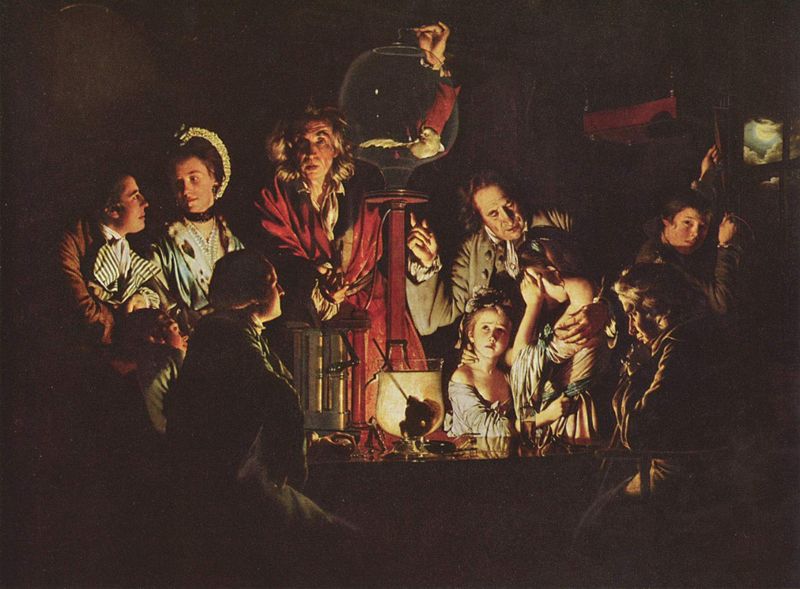To mark the start of National Science Week, today’s choice of picture is An Experiment on a Bird in the Air Pump, by Joseph Wright of Derby. Generally reckoned to be Wright’s masterpiece, the work was completed in 1768 and exhibited in the same year to widespread acclaim. “Mr Wright, of Derby, is a very great and uncommon genius in a peculiar way,” commented the reviewer for the Gazetteer. “Nothing can be better understood or more freely represented , than the effect of candle-light diffused through his great picture.” The artist’s dramatically tenebrous style, influenced by that of the seventeenth-century master Caravaggio and his followrs, was a novelty in English art of the time. So was his unusual subject: a scientific lecture intended to demonstrate, in the words of one of the painter’s contemporaries, “how necessary the Air is for animal Life, and Respiration.”
The air pump was invented in 1650 and first used on animals a decade later by the English scientists Robert Boyle and Robert Hooke, who investigated the effects of “impeded respiration” on larks, sparrows, mice, kittens and a number of other small creatures. By Wright’s time it was a fairly common item of scientific equipment, although few members of the public at large would have been familiar with its effects – unless, that is, they happened to attend an event such as the one shown here. Travelling scientific lecturers were much in vogue during the Enlightenment. Their lectures were often given publicly, in town halls up and down the country, but the one shown here is evidently taking place in a private home. The lecturer has saved his piece de resistance, the experiment on a bird in an air pump, for last. The bird, a white cockatoo (artistic licence on Wright’s part; rats...


